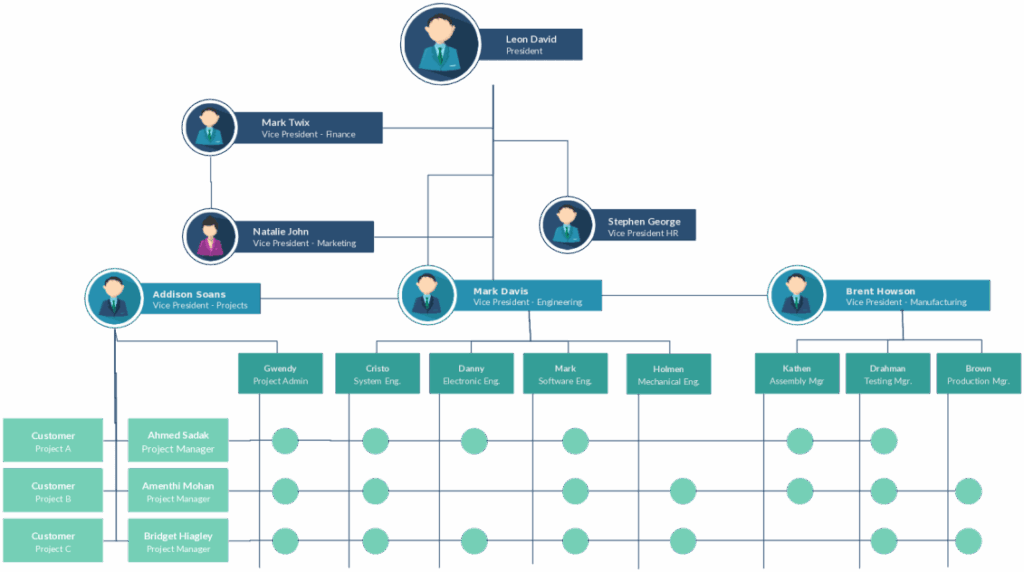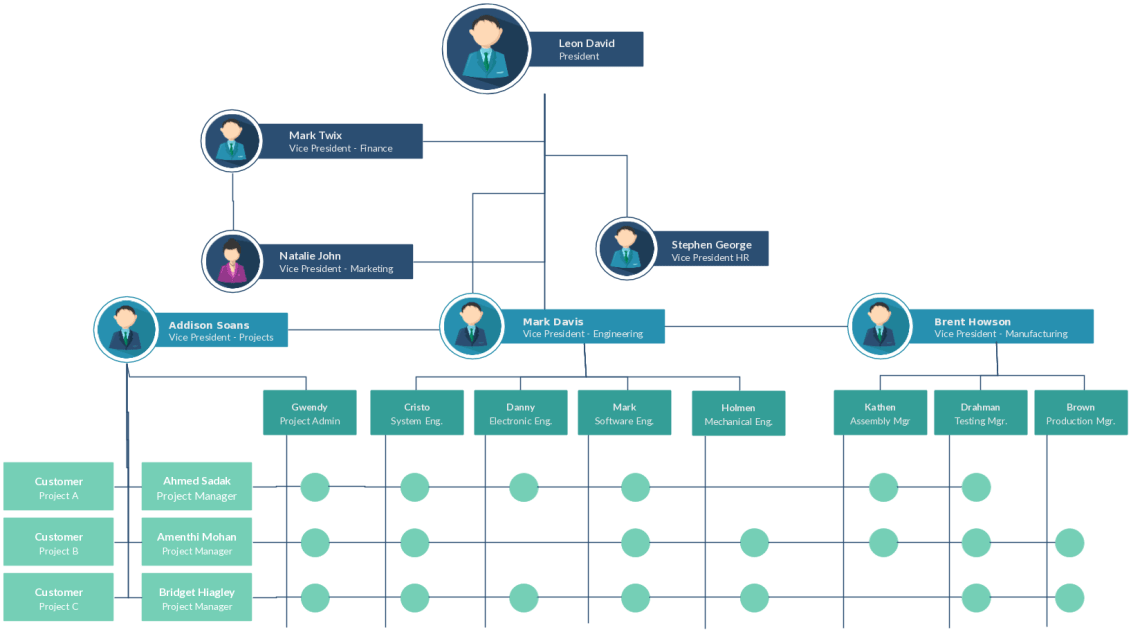
Understanding Company Structure: The Power of Org Charts
In today’s dynamic business environment, a clear understanding of company structure is crucial for success. One of the most effective tools for visualizing and managing this structure is the org chart. A well-designed company structure org chart provides a visual representation of roles, responsibilities, and reporting relationships within an organization. This article explores the significance of company structure org charts, their various types, and how they contribute to improved communication, efficiency, and overall organizational performance.
What is a Company Structure Org Chart?
A company structure org chart, short for organizational chart, is a diagram that illustrates the internal structure of a company. It displays the relationships between different positions, departments, and employees. These charts typically use boxes to represent individuals or roles and lines to indicate reporting relationships. The org chart visually outlines the hierarchy within the organization, showing who reports to whom and how different parts of the company are interconnected. A well-defined company structure helps employees understand their place within the larger organization and promotes accountability.
Why are Company Structure Org Charts Important?
Company structure org charts offer numerous benefits to organizations of all sizes. Here are some key advantages:
- Improved Communication: Org charts clarify reporting lines and communication channels, ensuring that information flows smoothly between different levels and departments.
- Enhanced Efficiency: By clearly defining roles and responsibilities, org charts help to eliminate confusion and duplication of effort, leading to increased efficiency.
- Better Decision-Making: When employees understand the company structure, they can quickly identify the appropriate decision-makers and escalate issues efficiently.
- Facilitated Onboarding: New employees can quickly grasp the organizational hierarchy and understand their role within the company using the org chart.
- Strategic Planning: Org charts can be used to identify gaps in the company structure, highlight areas for improvement, and support strategic planning initiatives.
- Succession Planning: By mapping out the current roles and potential successors, org charts aid in succession planning and talent management.
- Resource Allocation: Understanding the company structure helps management effectively allocate resources and personnel to different projects and departments.
Types of Company Structure Org Charts
Different types of company structure org charts are suitable for different organizational structures. Here are some common types:
Hierarchical Org Chart
The hierarchical org chart is the most traditional and widely used type. It features a top-down structure, with the CEO or president at the top and subsequent levels of management and employees arranged below. This type of chart clearly illustrates the chain of command and reporting relationships. A clear company structure, often represented in a hierarchical org chart, allows for efficient decision-making and accountability.
Flat Org Chart
A flat org chart, also known as a horizontal org chart, has few or no levels of management between executives and employees. This structure is common in small companies or startups where communication is direct and decision-making is decentralized. Flat company structure allows for greater employee autonomy and collaboration.
Matrix Org Chart
A matrix org chart is used when employees have dual reporting relationships, typically reporting to both a functional manager and a project manager. This structure is common in project-based organizations where employees may work on multiple projects simultaneously. The matrix company structure can be complex but allows for efficient resource allocation and knowledge sharing. [See also: Project Management Methodologies]
Divisional Org Chart
A divisional org chart organizes the company by product, market, or geographic region. Each division operates as a semi-autonomous unit with its own management team and resources. This structure is suitable for large, diversified companies. The divisional company structure allows for greater flexibility and responsiveness to market changes.
Functional Org Chart
A functional org chart groups employees based on their specialized skills and functions, such as marketing, finance, and operations. This structure promotes efficiency and expertise within each department. However, it can sometimes lead to communication silos and a lack of coordination between departments. The functional company structure can be efficient but requires strong cross-functional communication.
Creating an Effective Company Structure Org Chart
Creating an effective company structure org chart requires careful planning and consideration. Here are some tips:
- Define Your Objectives: Determine what you want to achieve with the org chart. Are you looking to improve communication, streamline processes, or support strategic planning?
- Gather Information: Collect accurate information about roles, responsibilities, and reporting relationships within the organization.
- Choose the Right Type: Select the type of org chart that best suits your company structure and objectives.
- Use Software Tools: Utilize software tools designed for creating org charts to simplify the process and ensure accuracy.
- Keep it Up-to-Date: Regularly update the org chart to reflect changes in the company structure, such as new hires, promotions, and reorganizations.
- Make it Accessible: Ensure that the org chart is easily accessible to all employees, either through a shared drive, intranet, or cloud-based platform.
- Seek Feedback: Solicit feedback from employees and managers to ensure that the org chart accurately reflects the company structure and meets their needs.
Company Structure Org Chart Best Practices
To maximize the benefits of a company structure org chart, consider these best practices:
- Clarity and Simplicity: The org chart should be easy to understand and navigate. Avoid unnecessary complexity and use clear, concise language.
- Accuracy: Ensure that the information in the org chart is accurate and up-to-date. Inaccurate information can lead to confusion and inefficiencies.
- Consistency: Maintain consistency in the design and formatting of the org chart to ensure a professional and user-friendly appearance.
- Regular Review: Regularly review the org chart to identify areas for improvement and ensure that it continues to meet the needs of the organization.
- Integration with HR Systems: Integrate the org chart with HR systems to streamline data management and ensure consistency across different platforms.
The Future of Company Structure Org Charts
As organizations become more dynamic and complex, the role of company structure org charts is evolving. Modern org charts are becoming more interactive and data-driven, providing real-time insights into organizational performance and talent management. Cloud-based org chart software allows for easy collaboration and updating, ensuring that the chart remains accurate and accessible. Furthermore, AI-powered tools are being used to analyze org chart data and identify potential areas for improvement in the company structure. The org chart remains a vital tool for understanding and managing the complexities of modern organizations. A well-maintained company structure org chart is an invaluable asset.
Conclusion
A company structure org chart is an essential tool for visualizing and managing the internal structure of an organization. By clearly defining roles, responsibilities, and reporting relationships, org charts improve communication, enhance efficiency, and support strategic planning. Whether you choose a hierarchical, flat, matrix, divisional, or functional org chart, the key is to create a chart that accurately reflects your company structure and meets the needs of your organization. Embracing company structure org charts and leveraging their benefits can significantly contribute to the success and growth of your business. Understanding the dynamics of your company structure is crucial, and the org chart provides that visual clarity.

